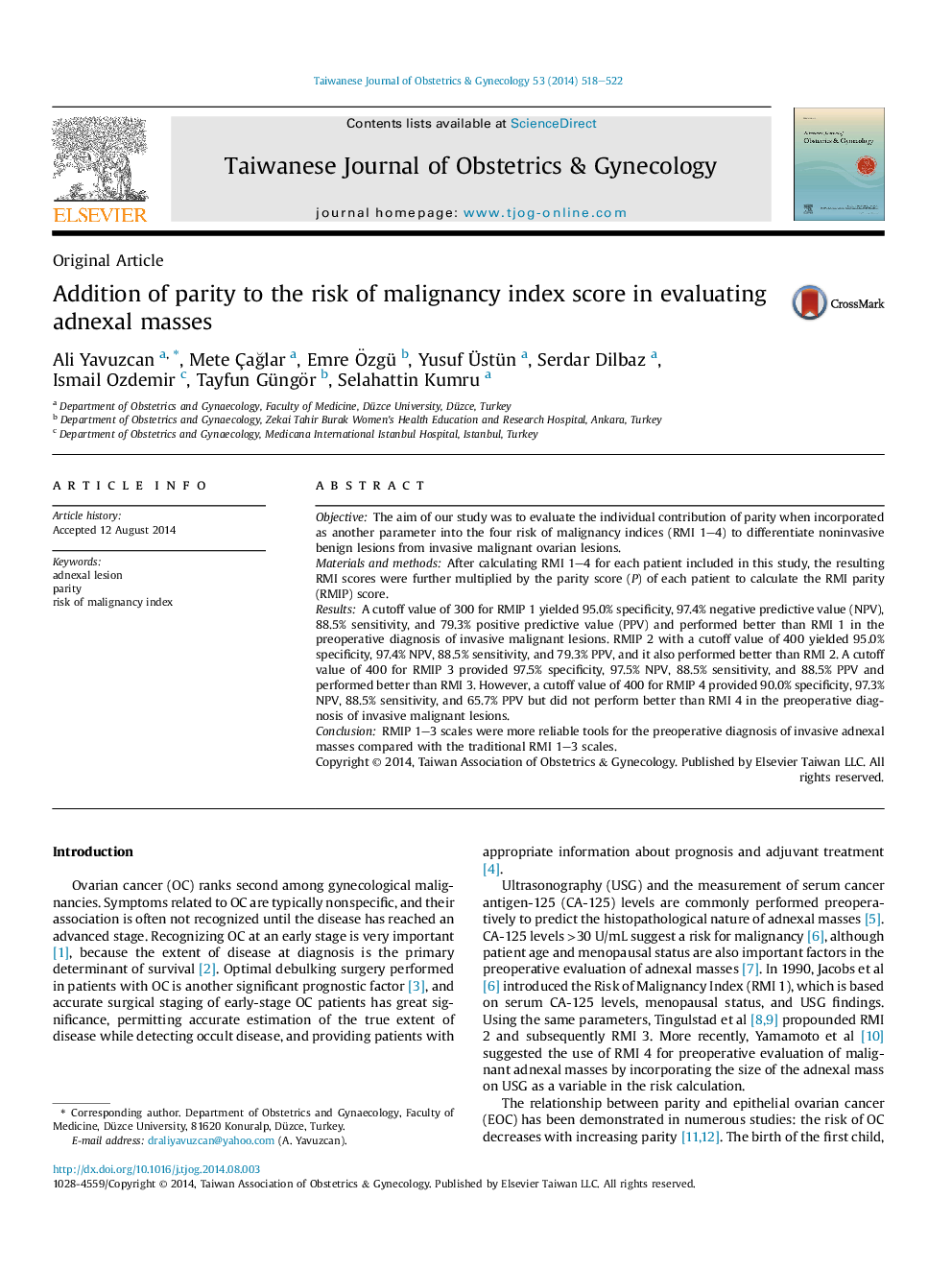| Article ID | Journal | Published Year | Pages | File Type |
|---|---|---|---|---|
| 3974949 | Taiwanese Journal of Obstetrics and Gynecology | 2014 | 5 Pages |
ObjectiveThe aim of our study was to evaluate the individual contribution of parity when incorporated as another parameter into the four risk of malignancy indices (RMI 1–4) to differentiate noninvasive benign lesions from invasive malignant ovarian lesions.Materials and methodsAfter calculating RMI 1–4 for each patient included in this study, the resulting RMI scores were further multiplied by the parity score (P) of each patient to calculate the RMI parity (RMIP) score.ResultsA cutoff value of 300 for RMIP 1 yielded 95.0% specificity, 97.4% negative predictive value (NPV), 88.5% sensitivity, and 79.3% positive predictive value (PPV) and performed better than RMI 1 in the preoperative diagnosis of invasive malignant lesions. RMIP 2 with a cutoff value of 400 yielded 95.0% specificity, 97.4% NPV, 88.5% sensitivity, and 79.3% PPV, and it also performed better than RMI 2. A cutoff value of 400 for RMIP 3 provided 97.5% specificity, 97.5% NPV, 88.5% sensitivity, and 88.5% PPV and performed better than RMI 3. However, a cutoff value of 400 for RMIP 4 provided 90.0% specificity, 97.3% NPV, 88.5% sensitivity, and 65.7% PPV but did not perform better than RMI 4 in the preoperative diagnosis of invasive malignant lesions.ConclusionRMIP 1–3 scales were more reliable tools for the preoperative diagnosis of invasive adnexal masses compared with the traditional RMI 1–3 scales.
